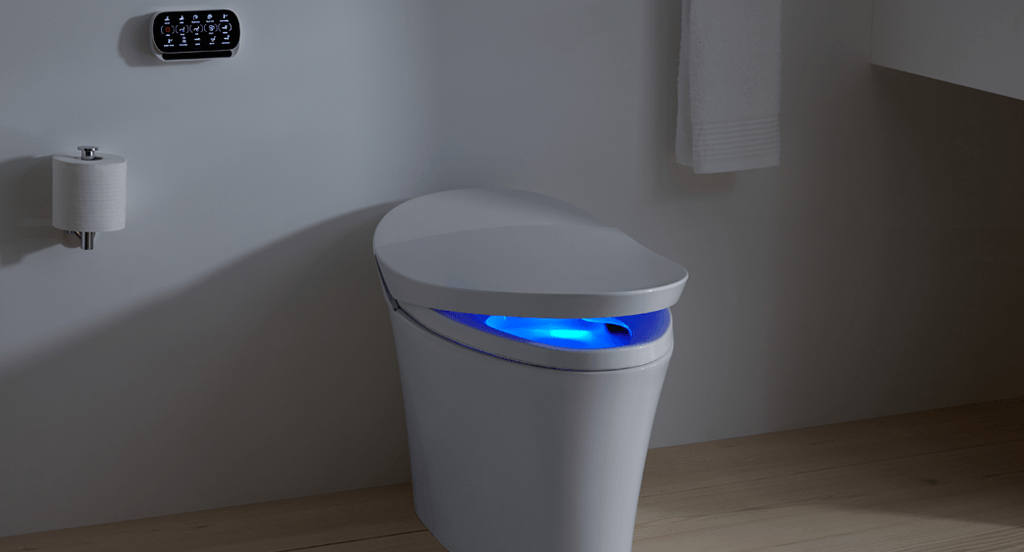An intelligent toilet (sometimes referred to as a modern-day bidet) is a bathroom plumbing fixture or type of electronic bidet toilet which incorporates traditional bidet cleansing (for genital, buttocks and anus hygiene), with the added enhancement of modern SMART home technology. Modern intelligent toilets incorporate electronic bidet cleansing functions into a ceramic toilet bowl for a low-profile and modern aesthetic. Intelligent toilet bidet functions are managed through voice command mobile app or remote control navigation depending on the toilet’s manufacturer, make and model.
Lower-cost options include a detachable toilet seat referred to as an "electronic bidet(“e-bidet”)" seat, which is becoming increasingly popular as well
Features:
- Electronic bidet shower for the front (lady) and rear cleansing
- Seat-warming
- Adjustable water temperature
- Deodorizer
- Air dryer
- Many models offer water-conservative 1.0-1.28GPF
- Illuminating nightlight
Health applications:
Intelligent toilets and electronic bidets aid numerous health concerns, especially for users with sensitive or damaged skin. By eliminating fecal bacteria left behind by toilet paper, intelligent toilets also dramatically increase a user’s hygiene by preventing the spreading of bacteria to each user’s hands. Intelligent toilets can aid:
- Skin rashes
- Hemorrhoid discomfort
- Physical limitations (that may make traditional toilet paper wiping difficult)
- Post-childbirth perineum cleansing and soothing
Environmental applications
Intelligent toilets are environmentally beneficial as they can reduce a user’s need for toilet paper, saving households money on paper products and allowing users to reduce their carbon footprint by reducing their paper consumption over time.Modern high-efficiency intelligent toilets also use 1.0-1.28 gallons of water per flush, reducing consumers’ water consumption and waste as well.
History
- 1700s: Bidets introduced throughout numerous European countries as a standard for hygiene and in some countries, contraceptive measures.
- 1980s: Electronic bidets are introduced around the world with popularity slowly growing in Japan, Europe and North America.
- 2000s: Numerous vendors including AXENT Switzerland, American Standard, TOTO, Duravit, and Kohler introduce one-piece, design-conscious electronic bidets. As more suppliers enter the market, electronic bidet toilets become more uniquely-designed while manufacturers begin testing the incorporation of more advanced toilet functions and tools.
- 2010s: Smart home technology and home automation gains momentum as homeowners begin incorporating digital lighting, climate, entertainment, appliance and home-monitoring systems into their homes.
- AXENT Switzerland debuts the user-monitoring and automated intelligent XT-SPA and AXENT.ONE Plus intelligent toilet at the Guangzhou Design Week in November 2017.
- Kohler promotes the Kohler Konnect concept suite and Veil intelligent toilet at CES in January 2018.
The need for a “smart toilet”
Doctors realize that our patients will spend 99 percent of their time outside of our office. Yet most of the data we use to make decisions about their care is collected irregularly in clinics or hospitals.
In my view, understanding the status of a patient’s day-to-day health outside of the clinic is key to having a holistic assessment of well-being and therefore delivering better care.

